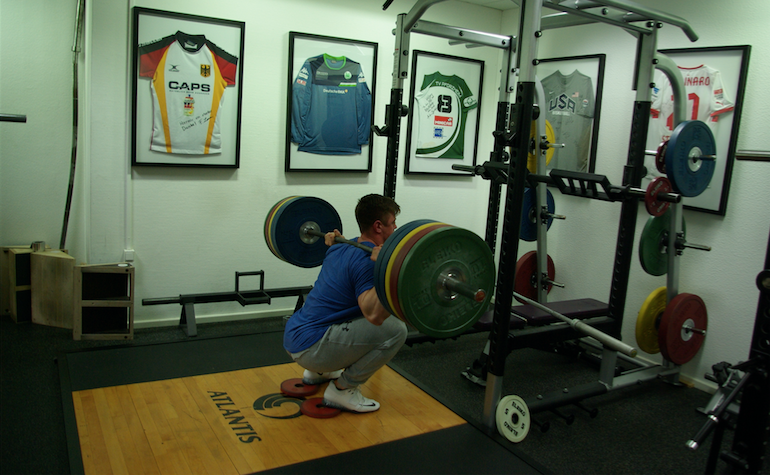"Ask the Coach" is the column in which Wolfgang Unsöld answers your questions. The book of the same name is available right here on Amazon.
Question: Good evening, I bought your book "Your Best Training" and would be very grateful if you could answer a question about squats. My question would be, can you replace free squats with machines, since I have extreme problems with the execution of free squats and am very insecure with higher weights. Thank you in advance, best regards, Werner
WU: That's a question I've heard quite a few times. At first glance, switching from free weight to machine sounds like a good idea, but it has too many disadvantages. The two main disadvantages of the machine when it comes to squats are:
An unnatural motion - the machine's default motion. With a machine, this is identical from person to person. Due to individual mechanics, however, the length of the torso, thighs and lower legs and, of course, the current individual mobility have a major influence. Here is the big advantage of the barbell, where the movement always adapts to the individual mechanics and mobility. This more natural movement reduces wear and tear on knees, hips and back in the medium and long term.
Less muscle fiber recruitment – Fewer muscle fibers are recruited here due to the predetermined and fixed movement sequence when doing squats on the machine. This leads to a lower training effect. And possibly also to an uneven training effect, which does not optimize the muscular balance but can have a negative effect on it. Classic, muscular deficits when doing squats, such as a weak vastus medialis and a weak lower back when doing squats on the machine, are rarely or not at all trained, depending on the machine and execution.
Nonetheless, the free weight of the barbell poses a certain safety risk. Two important steps to mitigate this security risk are:
Use the squat rack – The side shelves of the squat rack, which are usually adjustable, are designed so that the barbell can be placed on them if the worst comes to the worst. If the side racks are adjustable, they should be adjusted so that the distance from the racks to the barbell is as small as possible in the lowest position. Simply adjust these racks optimally during the warm-up sets and try placing the barbell on them with a lighter weight. Simply lower the weight all the way to the bottom of the squat, take your hands off the barbell, and lean your torso forward so the barbell falls vertically onto the racks. Test this procedure in advance with submaximal weight. This also provides security and confidence for reps that are very close to the max, knowing how to put the barbell down safely and easily should the worst come to the worst.
Increase the weights step by step - Often the weights used are increased too quickly and too early. For this reason, in every training program, I use microperiodization to specify exactly how the weight is increased in this program. I also use the "spread" - this is the percentage difference between the lightest and heaviest working set of an exercise in a training session - to specify exactly the extent to which the weight should be increased. It is crucial not to do too many or too few sets close to the maximum. The more cicrca-maximum sets you do, the higher the density of repetitions with effective training stimulus with high quality of movement and high safety. In practice it may look like your 5RM squat is 100kg. If you now do 4 sets of 5 repetitions of 5 in the range of 85kg to 95kg, you are not so close to the maximum for 4 out of 5 sets that the safety question arises, but just close enough to the maximum to still have a relevant training effect to achieve. This allows productive repetitions with high movement quality and safety. And thus a continuous increase in training performance with increasing security at higher weights.
Using the squat rack and especially increasing the weight step by step considering the microperiodization and the spread are two excellent practical tips. I use the micro-periodization and possibly also the spread in all training programs of our customers and athletes as well as the YPSI online coaching program. For more progress and more safety.
Good luck with free squats!
More information about the YPSI Online Coaching Program here
Image: Barbell squats with heels elevated. More about this here .

